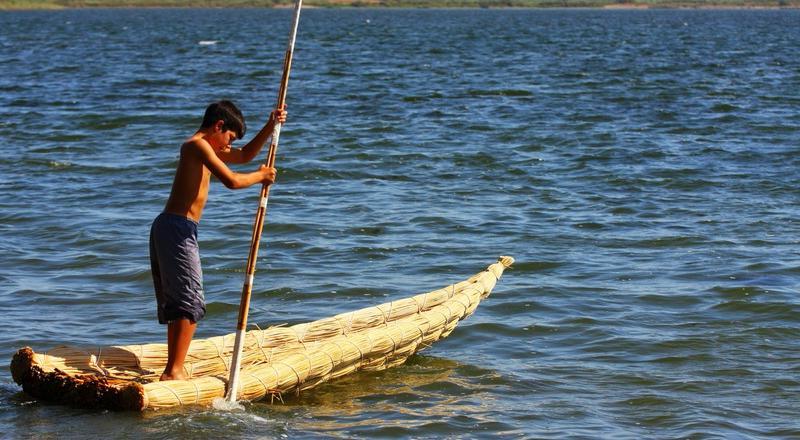“Is Fassonis”, Sardinian’s Lake Boats 0 Comments

We know that the ancient Sardinians were sea people. Approx. 120 Nuragic bronze statuettes representing Nuragic ships, are confirming that they had good nautical knowledge. But we have always thought about the sea and less about river navigation. Instead, Is Fassonis, the Sardinians lake-boats, made with “is fenus”, bundles of marsh hay, tied together with woven rush ropes, with flat hulls, about 4 meters long, with a pointed bow and truncated stern, tell us another story.
Scholars tend to favor the idea of a Nuragic flotilla with three types of boats, two larger ones for the sea, plus a third of small lake vessels, comparable to the Is Fassonis of the Cabras and Santa Giusta ponds where in ancient times they were used for lake fishing.
History tells us that the first papyrus boats were the Egyptian ones, so solid that they were not relegated only to navigation on the Nile but also on the sea. Even today, papyrus boats like those of the Egyptians can be found in Africa: in Ethiopia in Lake Tana, they are called "Tankwa" while in Lake Zwai they are called "Shafat", and in Chad near the homonymous lake they are called "Kedeye" and the fishermen are still constructing them today with the same techniques used four thousand years ago.
But returning to our Sardinian’s lake-boats, the tradition of bundled marsh hay was about to disappear, because plastic and technology were taking the place of marsh hay, the “feu”, and young people no longer learned from their fathers the art of both the construction of Is Fassonis and their management where great skill is needed to proceed with the sole help of a pole in the Oristano ponds.
The municipality of Santa Giusta, 193 km and a two-hour drive from the Gabbiano Azzurro Hotel & Suites, had a brilliant idea: organizing the "Is Fassonis Regatta" which is held on the first Sunday of August in Santa Giusta. The master builders through workshops will teach the youngsters the construction methods to preserve and pass on the art of weaving and teach the athletic skills necessary for running Is Fassonis, for the benefit of the Sardinian cultural identity.
The boat construction begins with the collection of the “fenu” or “feu”, protected by the Autonomous Region of Sardinia which has delimited and protected the areas where it grows. In fact, it can only be cut from mid-June to mid-July, and is left to dry for two weeks to prevent it from growing musty. Then the bundles of “feu” are tied with intertwined rush ropes, to form, as mentioned, the flat boat with a tapered bow and truncated stern.
A precious image of Is Fassonis is drawn on the walls of the hypogeum of the Sanctuary of S. Salvatore in S. Giovanni di Sinis (4th century AD), not far from the Phoenician-Punic city of Tharros.
“If you want to build a ship, don’t drum up the men to gather wood, divide the work, and give orders. Instead, teach them to yearn for the vast and endless sea.” (Antoine de Saint-Exupéry)
--Written by Daniela Toti
Share your opinion with us!